Political, cultural and ceremonial centers, the marae were highly symbolic sites for Polynesians. Most of these open-air temples date from several centuries ago and to explore them is to delve into the very foundations of the ancestral culture of The Islands of Tahiti.
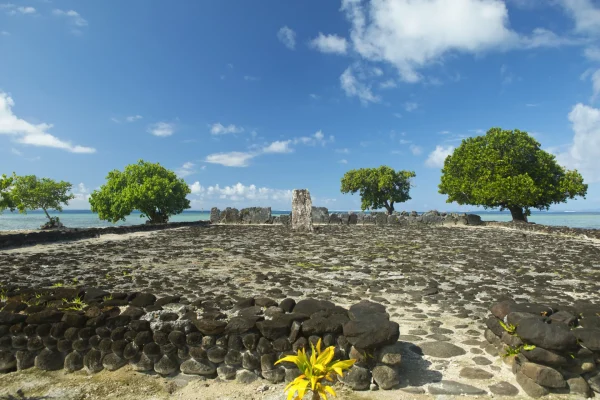
1
Marae of Taputapuatea in Raiatea, the heart of the Polynesian triangle
Classified as a World Heritage Site by UNESCO in 2017, the marae of Taputapuatea is the biggest and most important marae in The Islands of Tahiti. Located on the island of Raiatea, just a few kilometers from Bora Bora, it is considered the birthplace of the ma’ohi civilization and is the cultural and spiritual center of the Polynesian triangle. A visit to this vast site is essential to understand its importance in the history of French Polynesia.
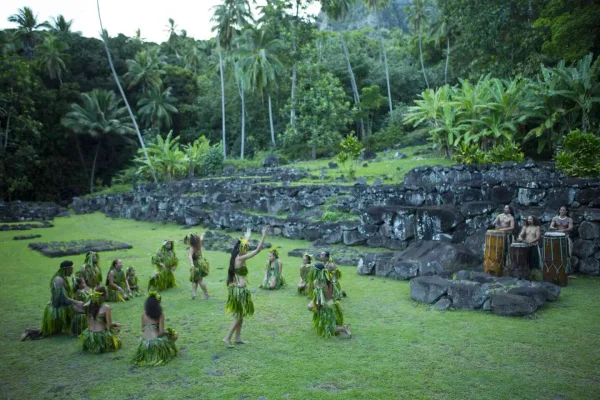
2
Upeke marae in Hiva Oa and its sacred mana
Upeke is a vast ceremonial site in the valley of Taaoa on the island of Hiva Oa in the Marquesas Islands. The valley is unique in the number and concentration of archeological remains to be found there. It is an extremely important site in Marquesan history and mythology. The main ceremonial site is a tohua, or public square, surrounded by paepae, stone platforms. The site feels infused with a very strong energy; that is the mana!
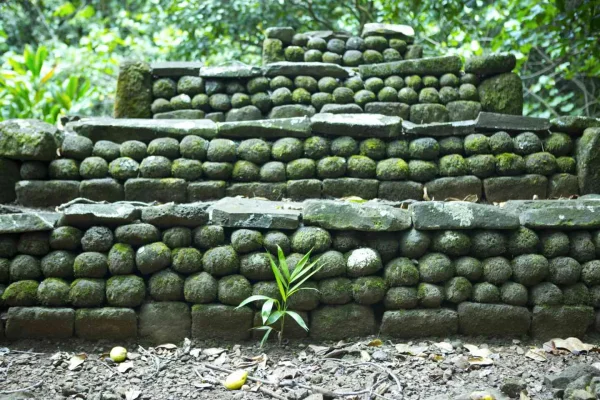
3
Opunohu marae in Moorea
One of the most visited sites in Moorea is the marae of ‘Opunohu. It is a collection of almost 500 different structures: marae, dwellings, agricultural terraces and archery platforms. You can discover the different sites on the ‘trail of the ancestors’, which takes you through the forest from site to site. This ethnological and archeological trail provides a fascinating insight into the lives of the people who once lived in the valley, and the environment in which they lived.
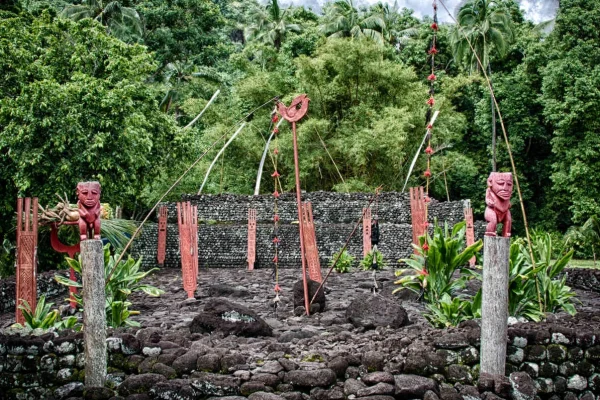
4
Arahurahu in Paea, the most visited marae in Tahiti
Arahurahu in Paea is one of the most visited marae in The Islands of Tahiti. It is also one of the most impressive, at 28 meters long and 17 wide, with an ahu (altar platform) three meters high. Each year, during the Heiva i Tahiti festival, the French Polynesian Conservatory organizes a traditional spectacle here. The two large tiki that stand guard at the entrance, are replicas of the original tiki that were sculpted on the island of Raivavae.
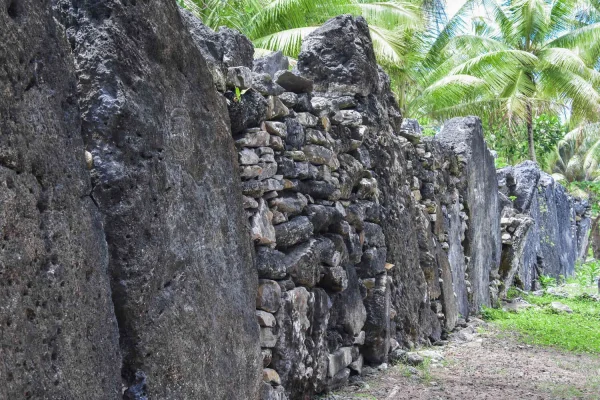
5
Manunu in Maeva, Huahine
This marae was originally dedicated to Tane, the god of war and fishing, and later to the god Oro, as well. A rare aspect for a marae in the Society Islands is the ahu (altar) with two platforms. There is a petroglyph depicting a sea turtle on one of the stones. Raiti, the last high priest of Maeva, was buried here in 1915. There are several different parts to the site, including the marae, an authentic stone fish trap, of the type still used in French Polynesia today, and a fare pōte’e (small hut) which houses a museum of traditional culture and archeology,
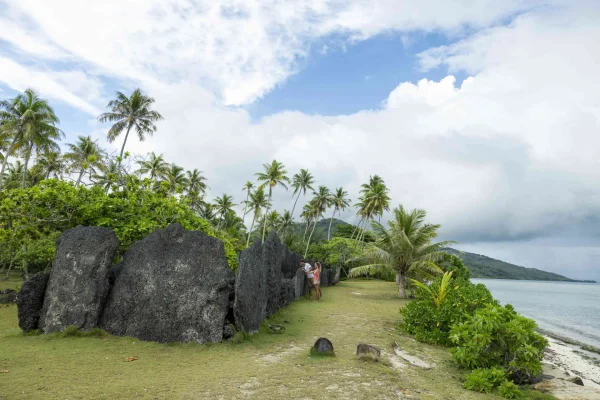
6
Anini a marae on the shore in Huahine
The marae at Anini is a long, stone structure, by the side of the lagoon in Parea, on the southern point of Huahine. It is built of impressive blocks of coral stone, some of which stand erect. According to researchers, they were for the priests and chiefs to lean against. In his memoirs, published in 1818, William Ellis, a Protestant missionary, wrote that the last priest to preside over the marae, could remember at least 14 human sacrifices that were carried out there.
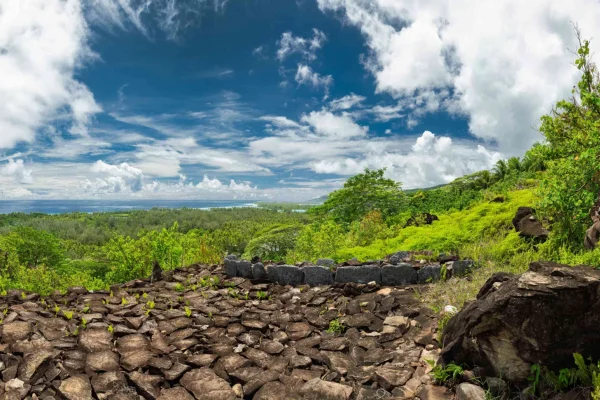
7
The paepae at Ofata, and its panoramic view over Huahine
In the hills above Maeva, the paepae at Ofata offers superb views over the island of Huahine. A paepae is a paved platform of volcanic stones or blocks of coral, which formed the foundations and flooring of wooden constructions. Some of these were simple dwellings, and others were meeting houses. The paepae are often found around the outside of the tohua, the main square of the marae, in the same way as houses were once built around town squares in Europe.
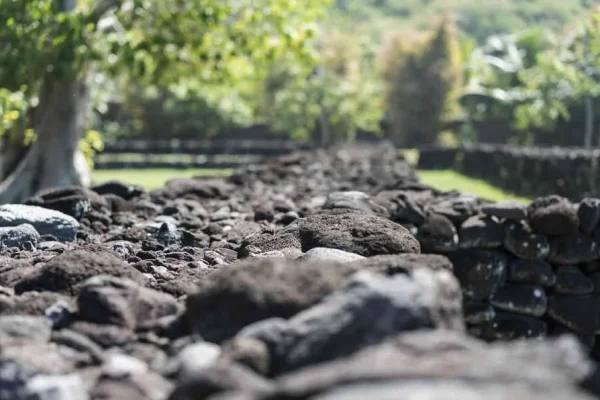
8
Marae Ta’ata, a site for fishermen
The marae of Ta’ata in the district of Paea in Tahiti, is composed of three enclosures, one for each of the three chiefs whose alliance was at its origin. A highly important and sacred ceremonial site, the atmosphere, or mana, feels charged with the memory and spirit of Polynesian history.
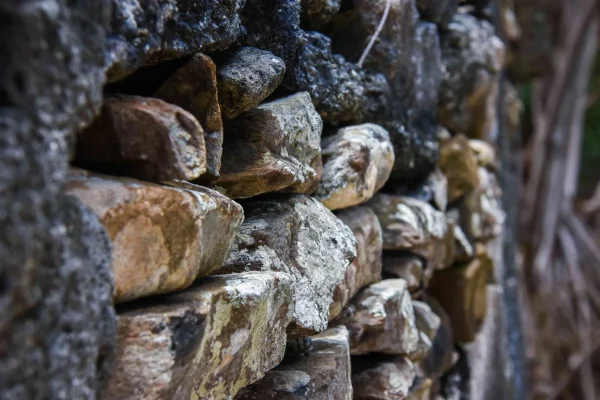
9
Māha’iātea, the biggest historical site in The Islands of Tahiti
Situated by the side of the lagoon in Papara on the island of Tahiti, the marae of Māha’iātea was once the biggest marae in French Polynesia. European explorers described it as being 80 meters long by 26 wide and 17 meters high. Comparing it to the Mayan temples of South America Captain James Cook wrote that it was ‘a magnificent example of Indian architecture.’ The marae has recently been restored to its former glory.
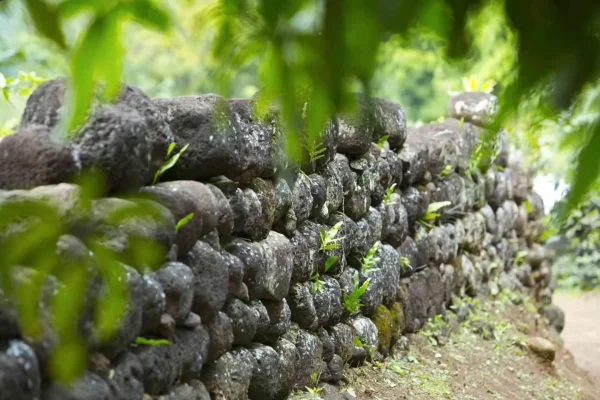
10
Marae Tefana i Ahura’i a Tama, in Faa’a
The Marae Tefana i Ahura’i a Tama, is in Faa’a on the island of Tahiti. It is the ancestral marae of local canoe builders and is dedicated to Ta’aroa, the god of creation. The name of the marae refers to the royal family in the reign of prince Teriivaetua i ahura’i. Once an important place for prayer and the benediction of canoes, it is one of the principal marae in the district of Faa’a.
All Sacred Sites
Thematics
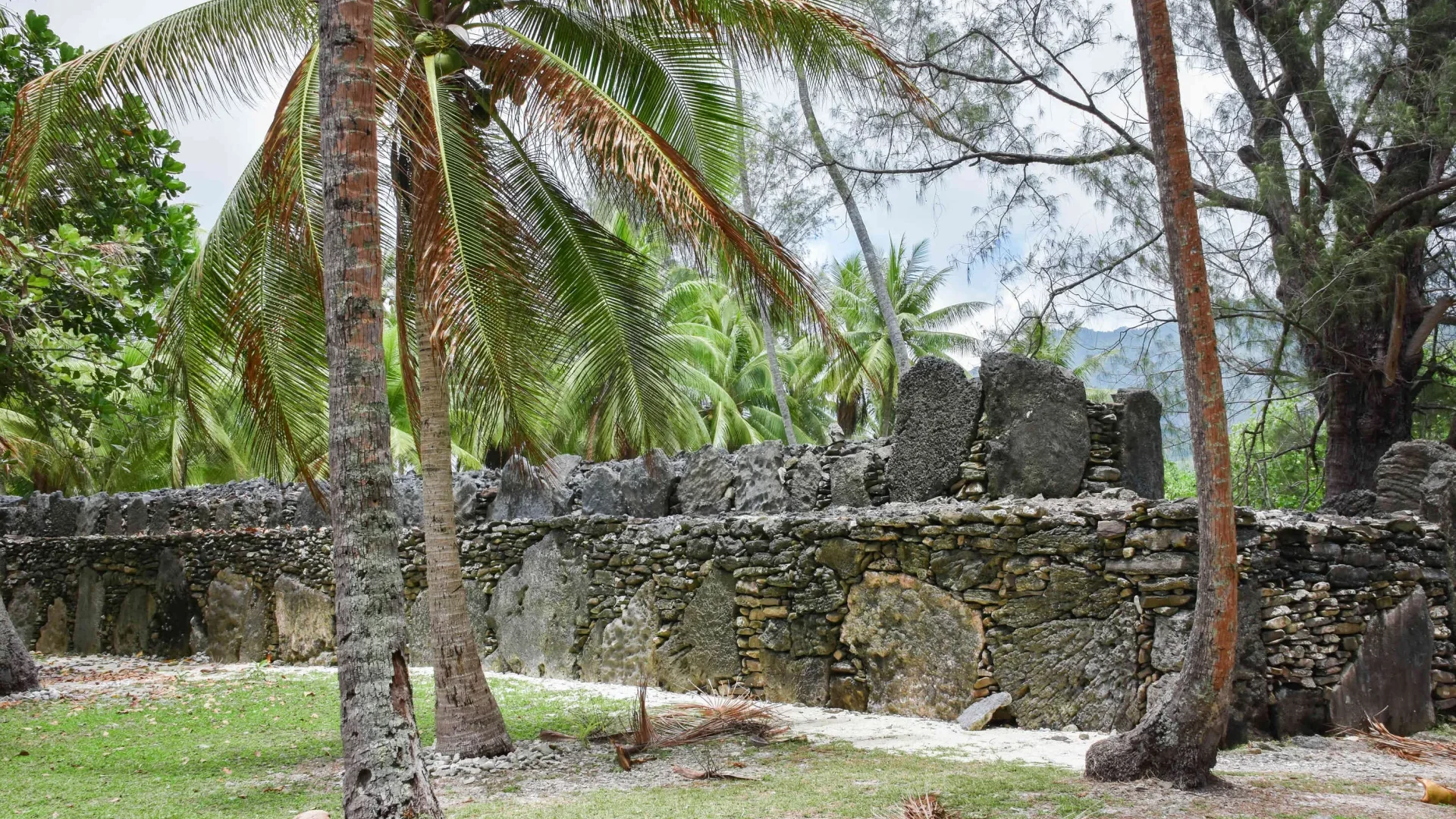



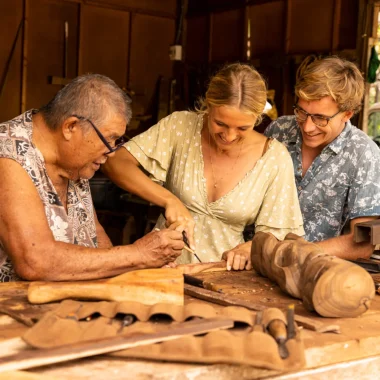
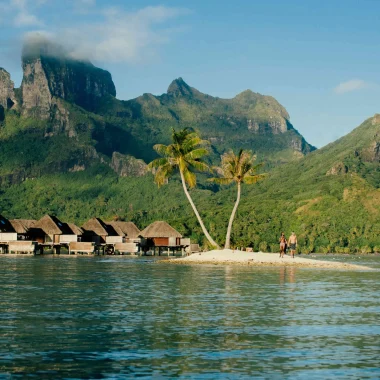
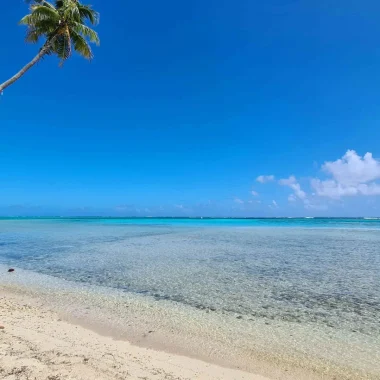

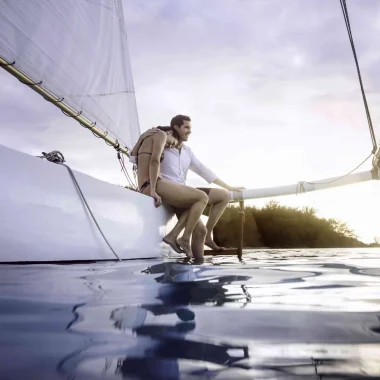
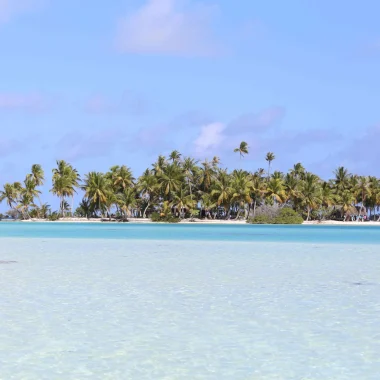

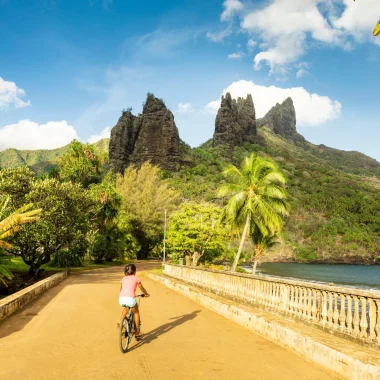
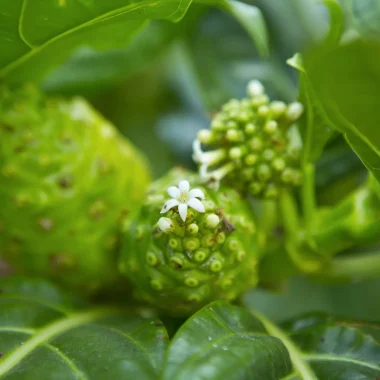
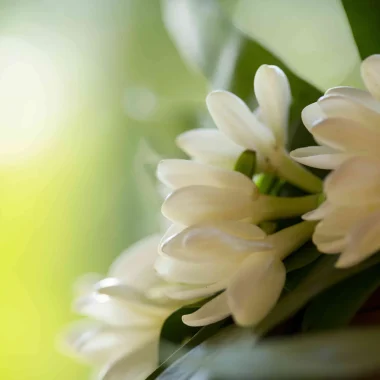
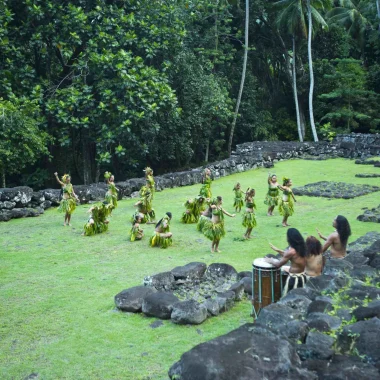

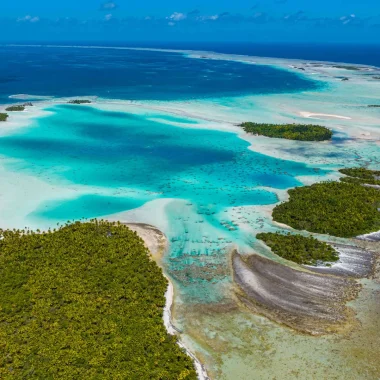
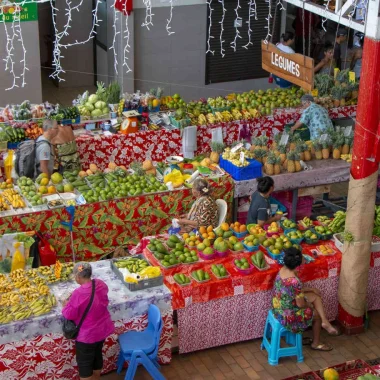
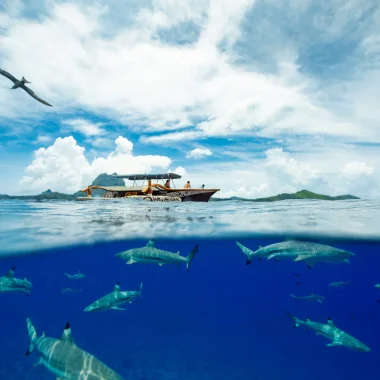
 Australia
Australia
 Belgique
Belgique
 Brasil
Brasil
 Canada (EN)
Canada (EN)
 Canada (FR)
Canada (FR)
 Chile
Chile
 Deutschland
Deutschland
 España
España
 France
France
 Italia
Italia
 Mexico
Mexico
 Polynésie française
Polynésie française
 New Zealand
New Zealand
 Schweizerisch (DE)
Schweizerisch (DE)
 Suisse (FR)
Suisse (FR)
 United Kingdom
United Kingdom
 United States
United States
 한국
한국
 中国
中国
 日本
日本